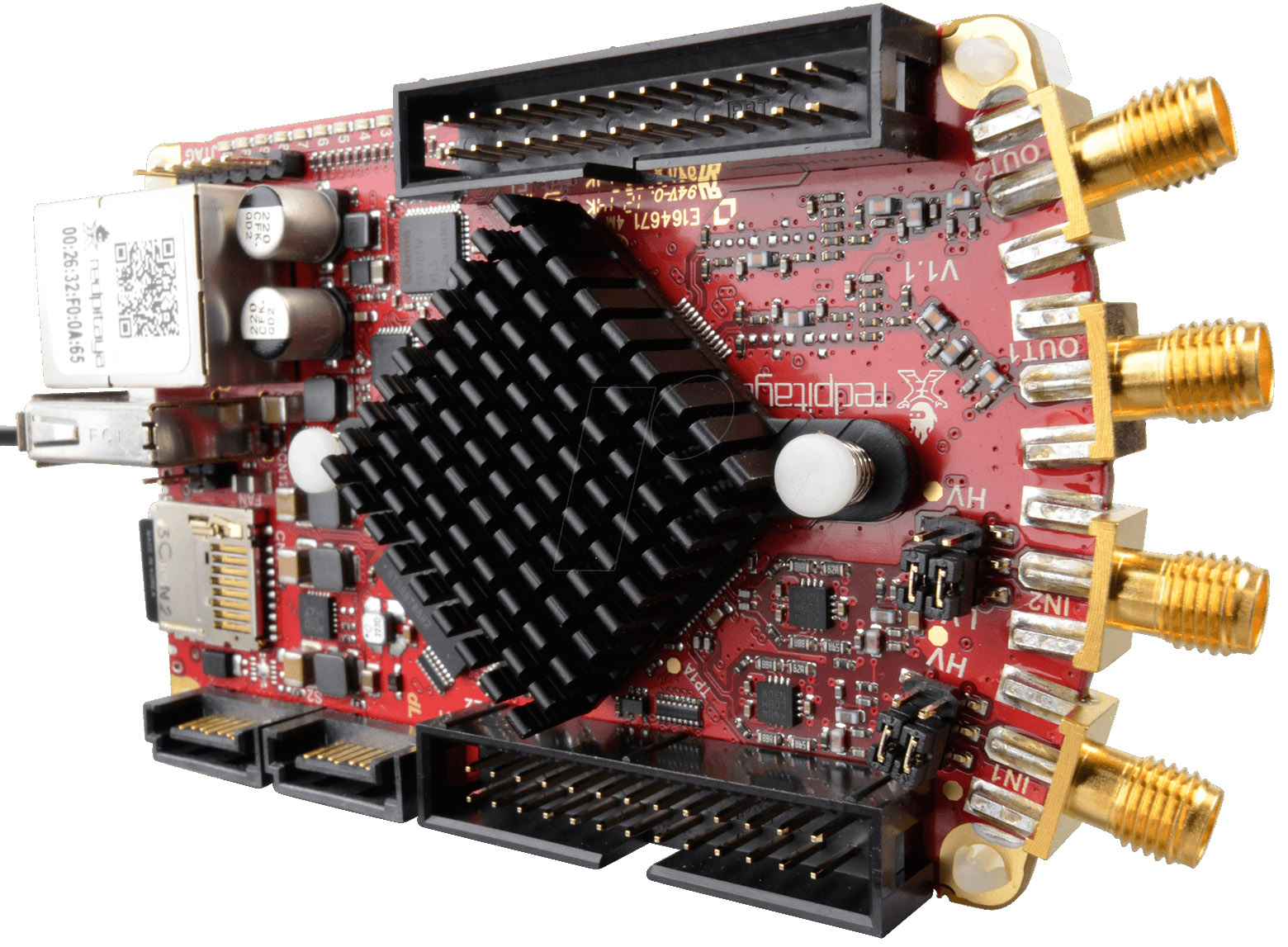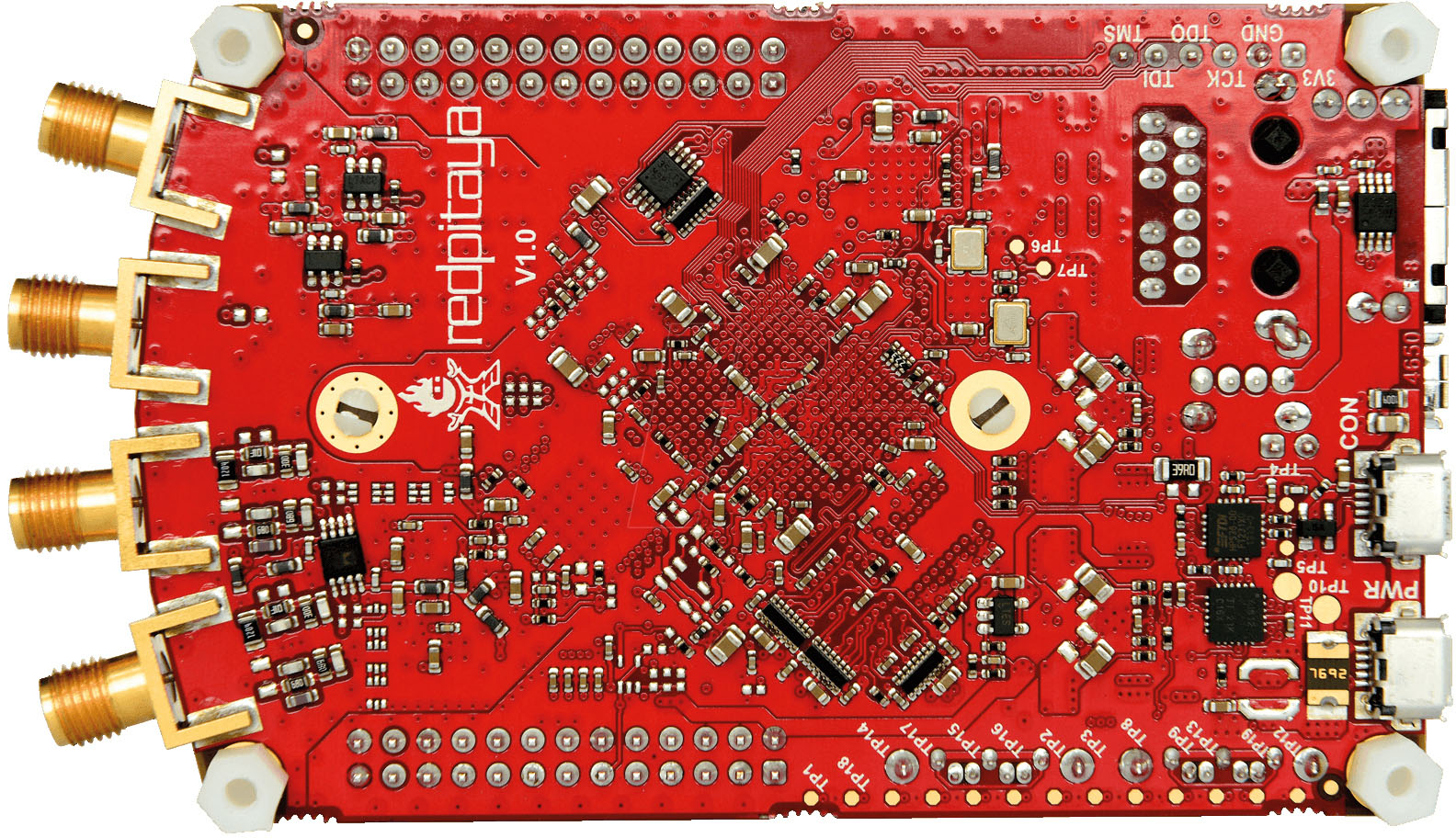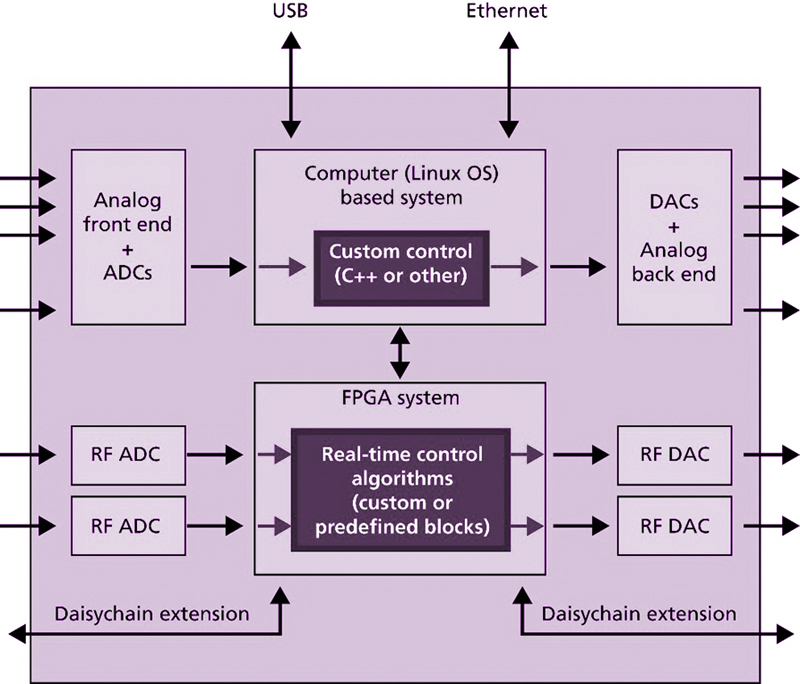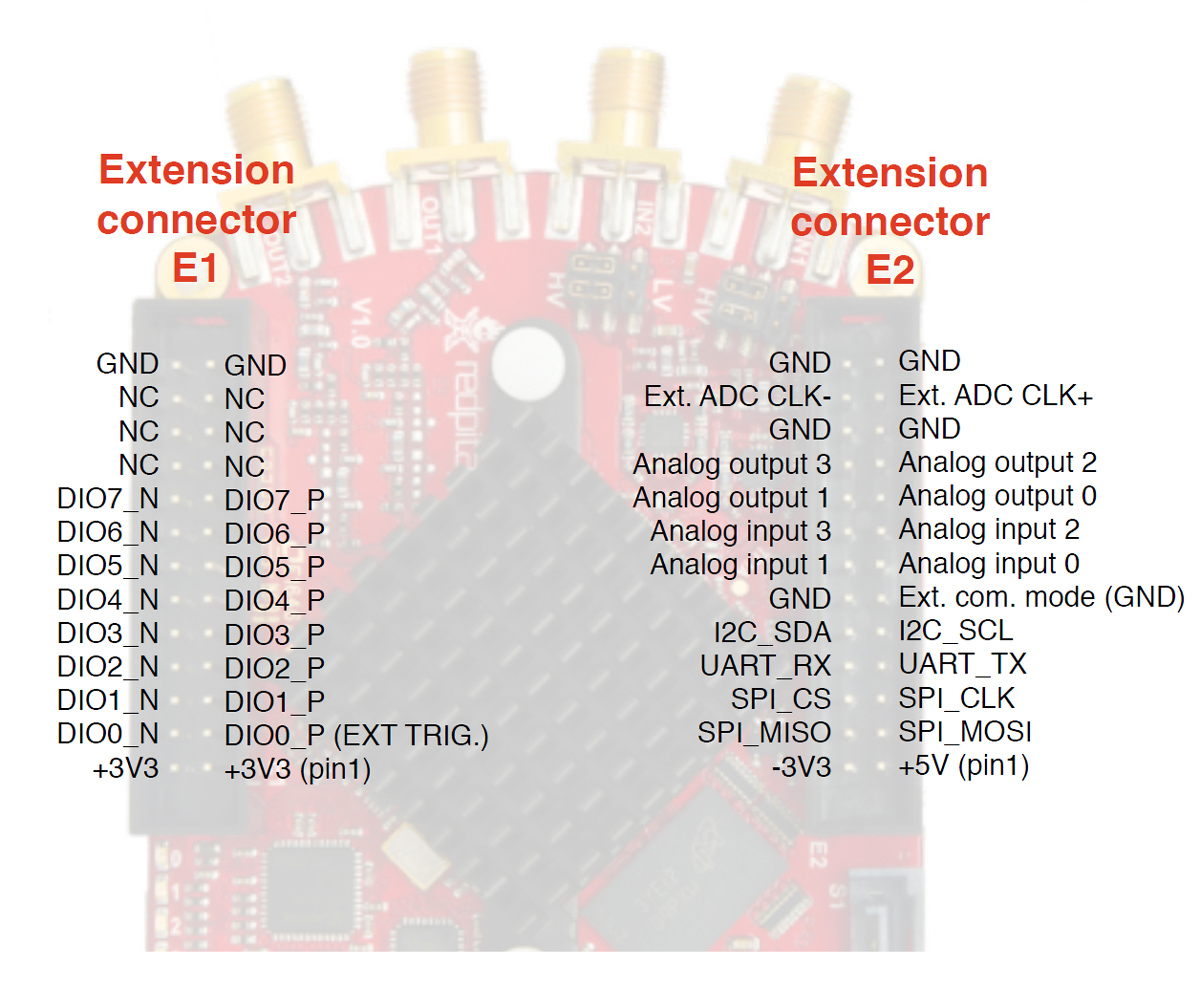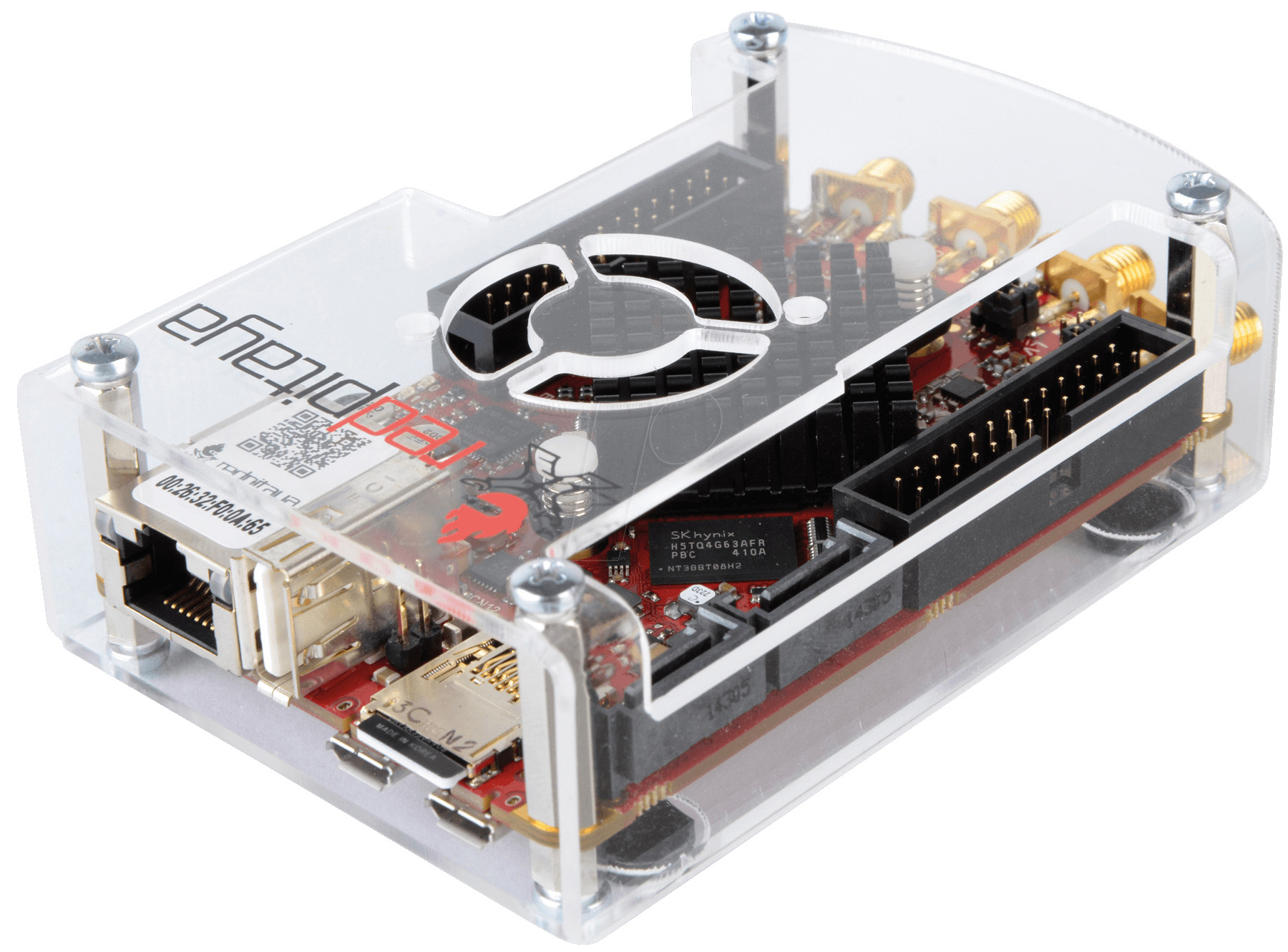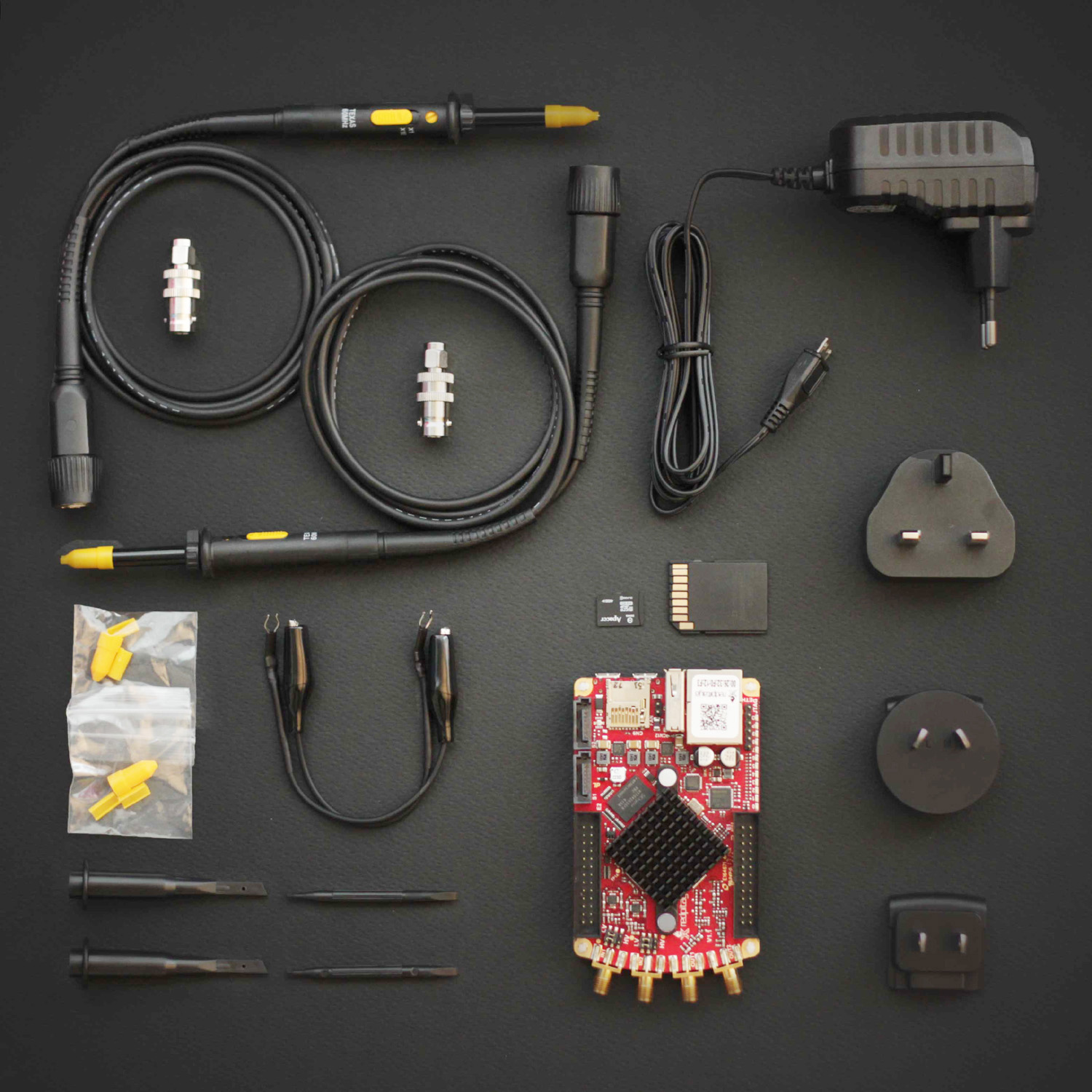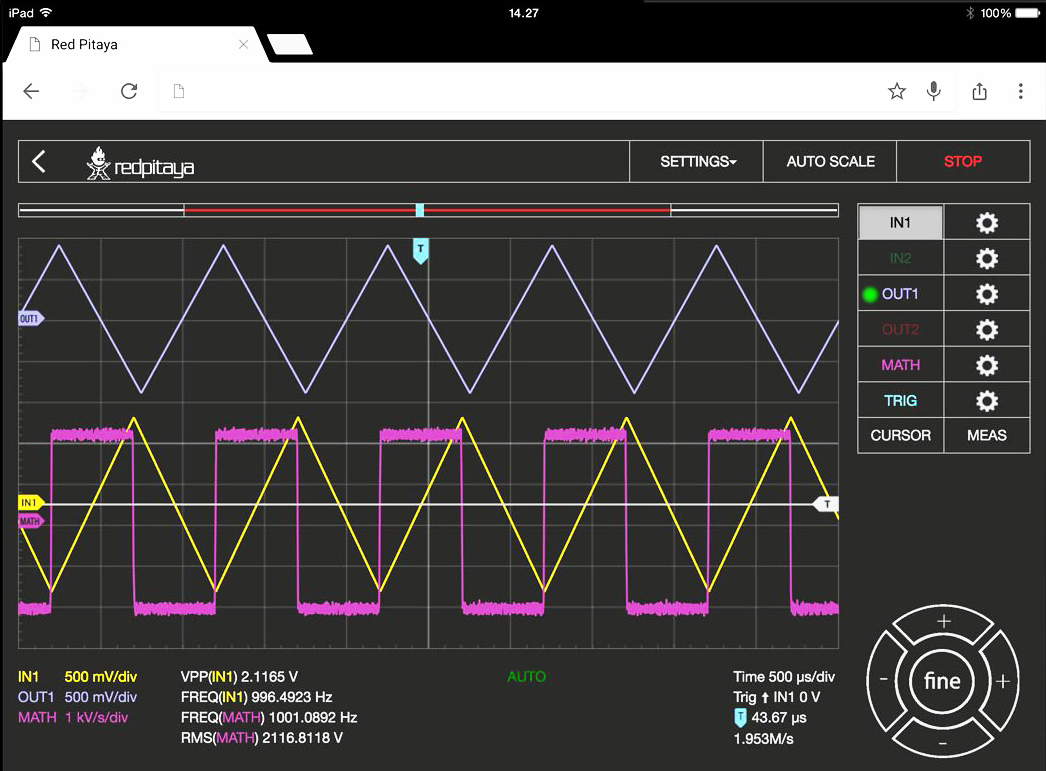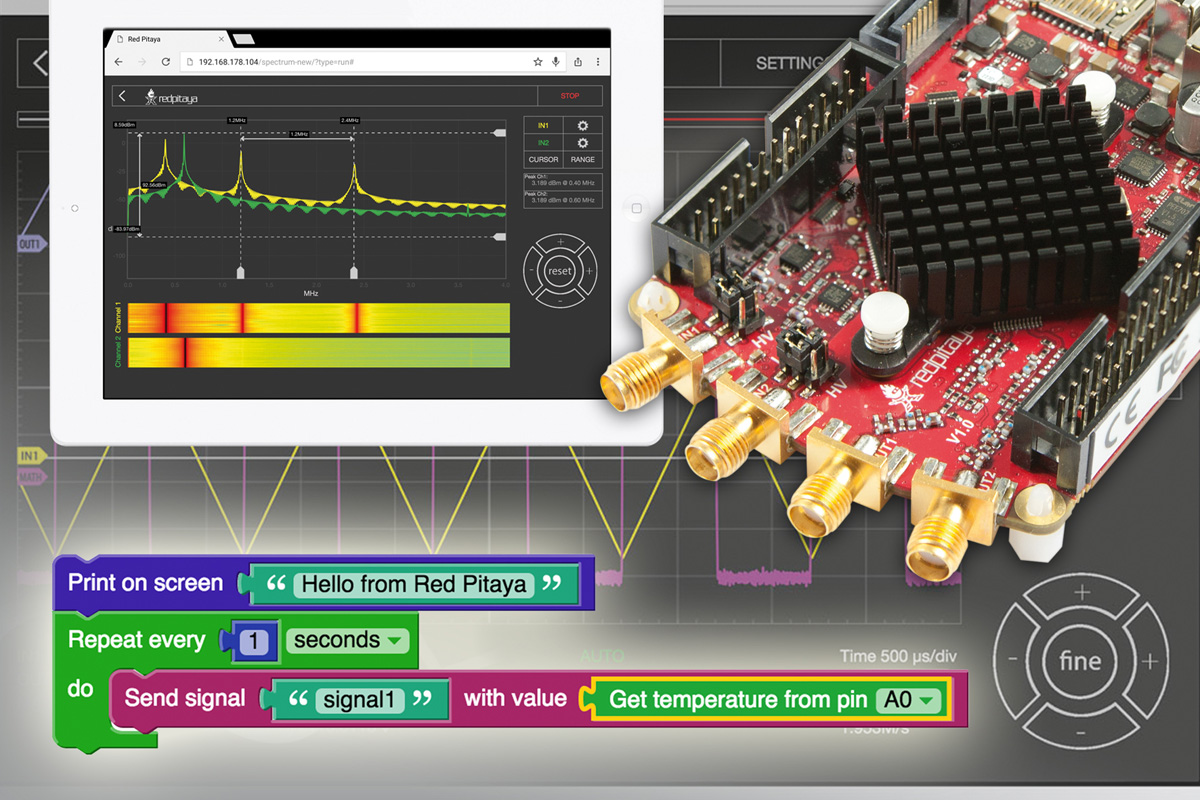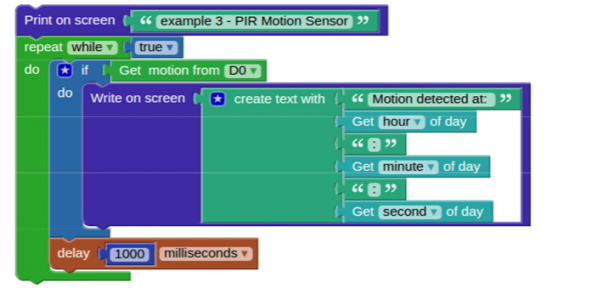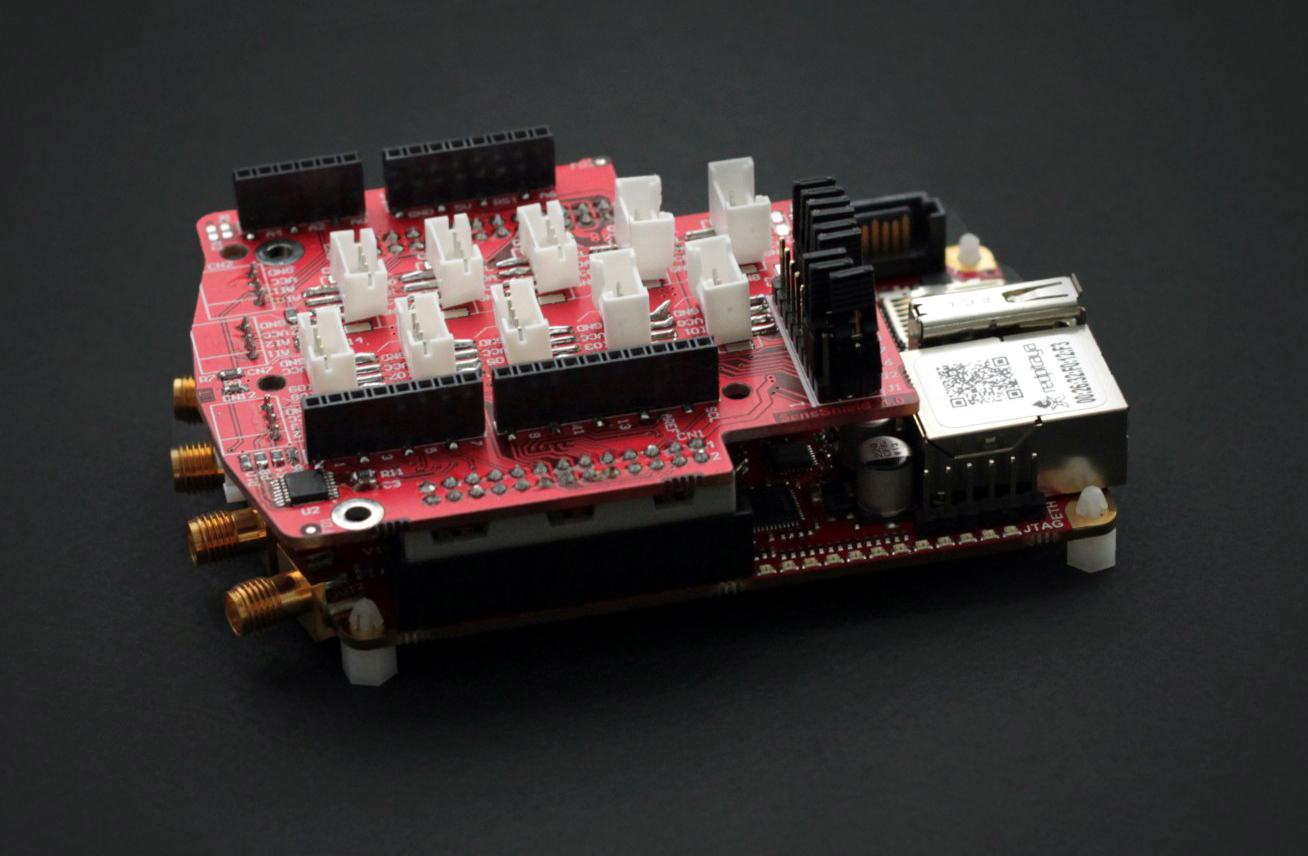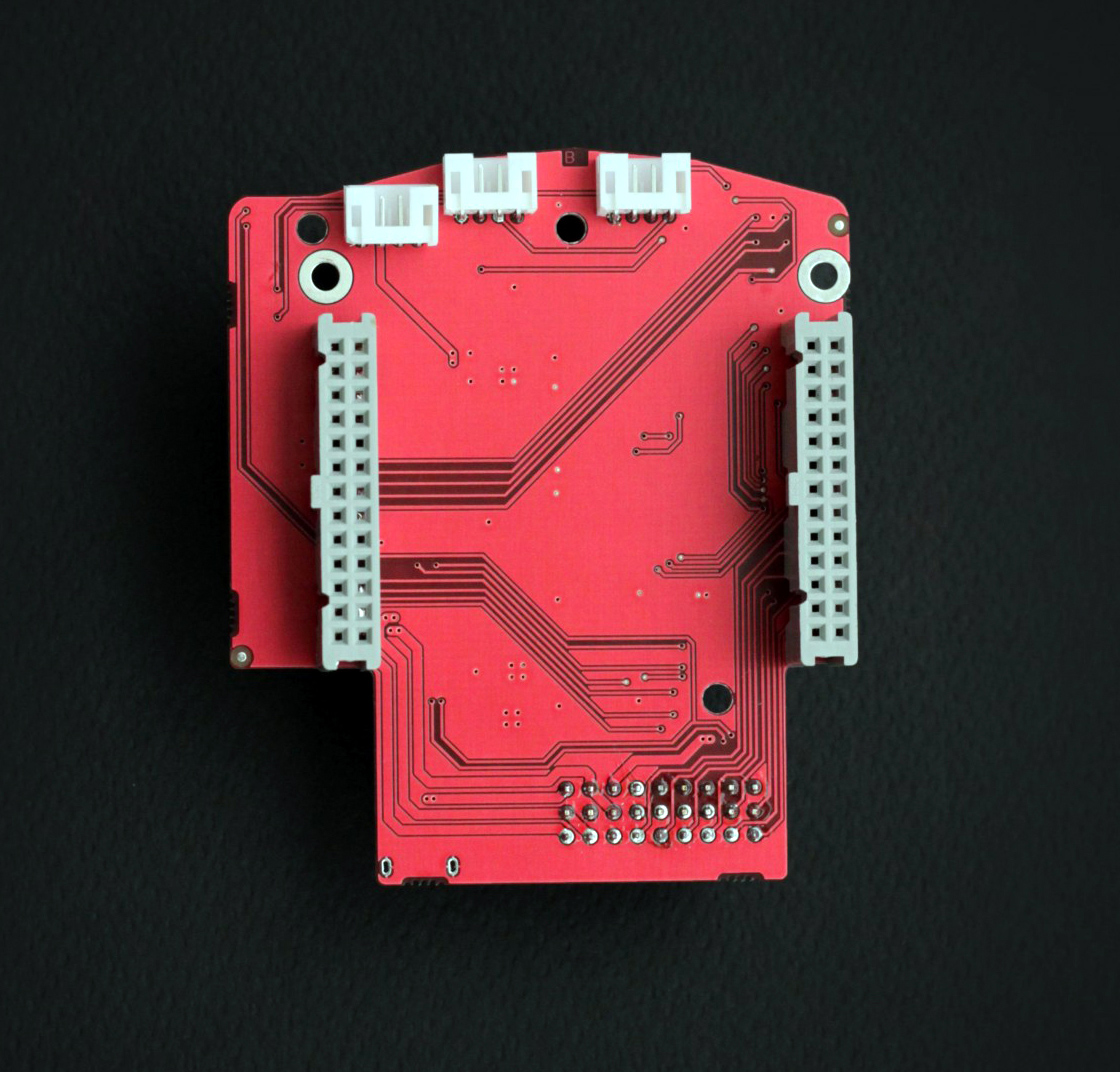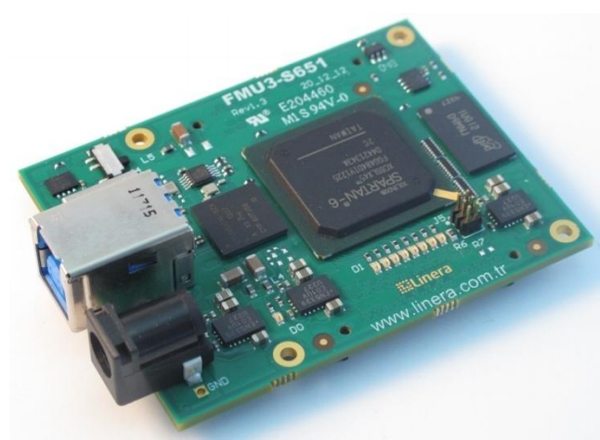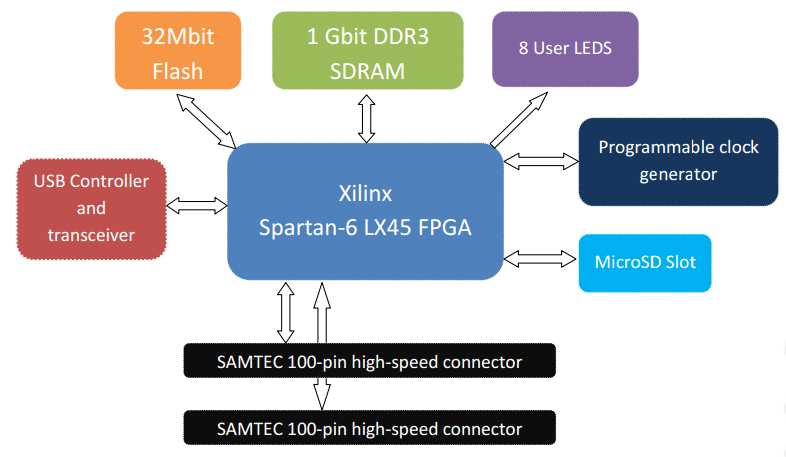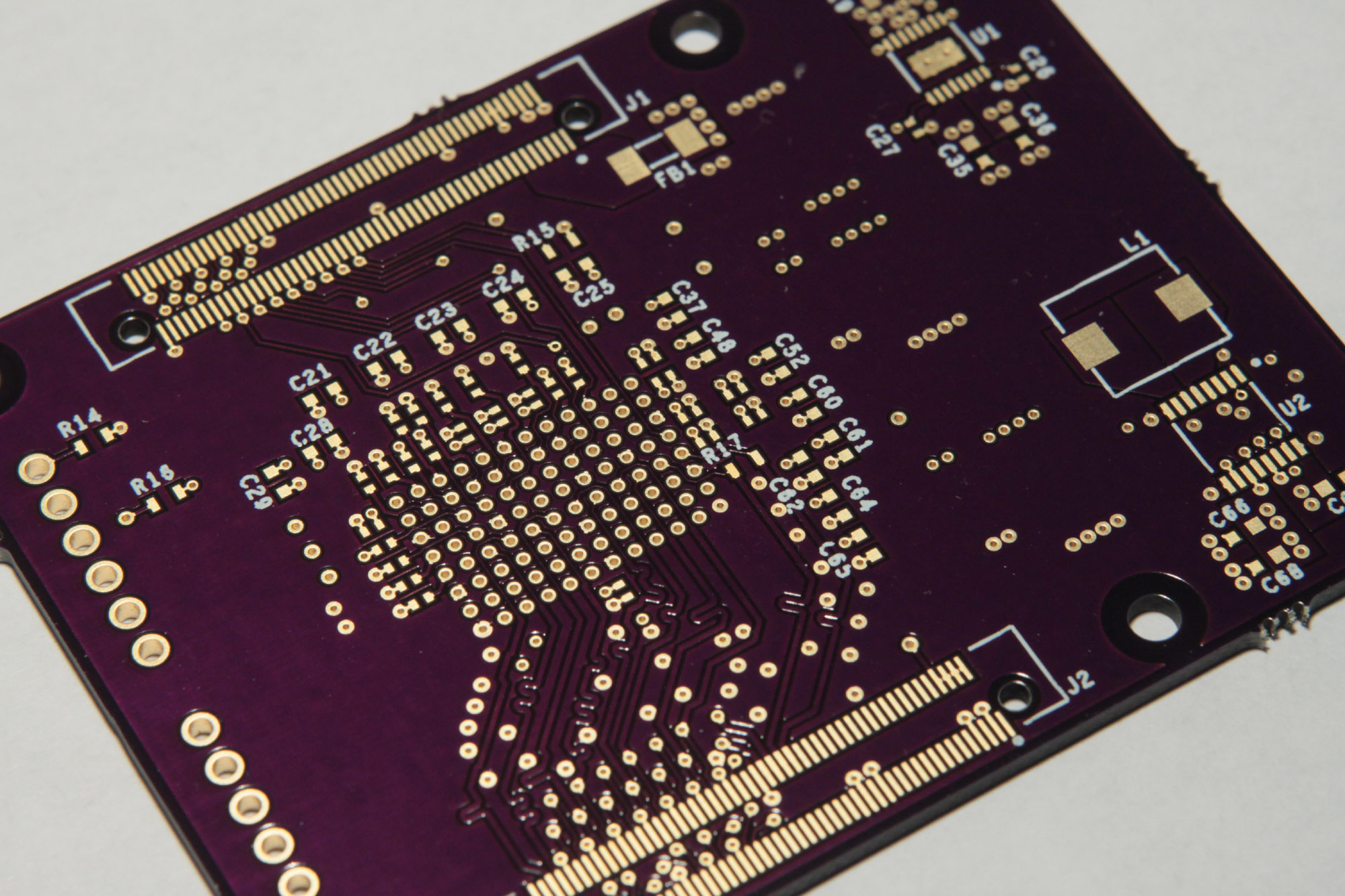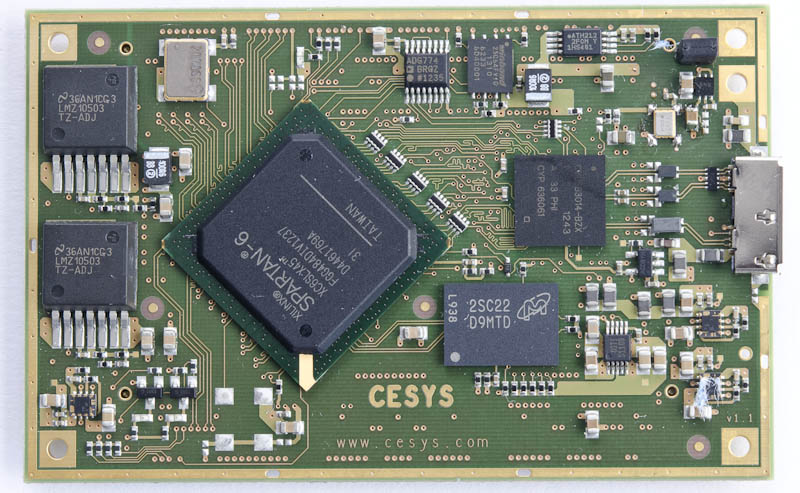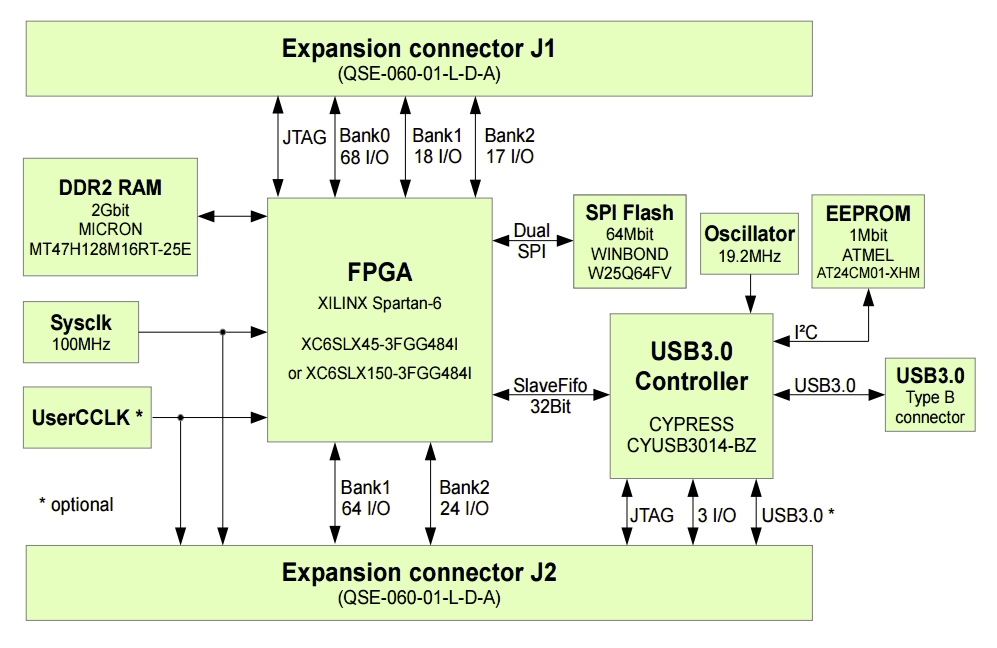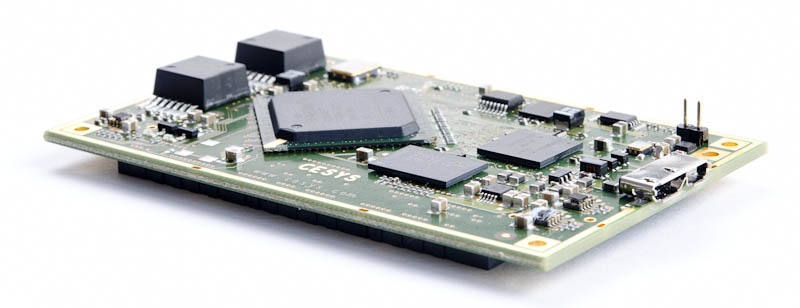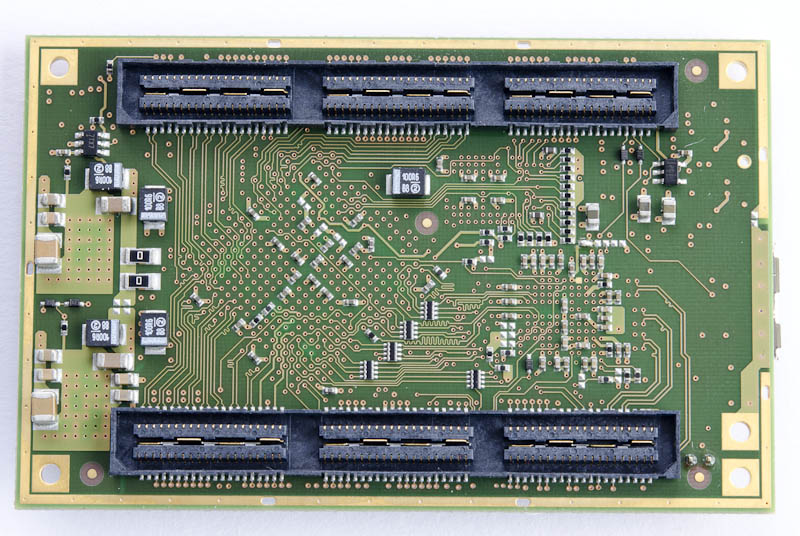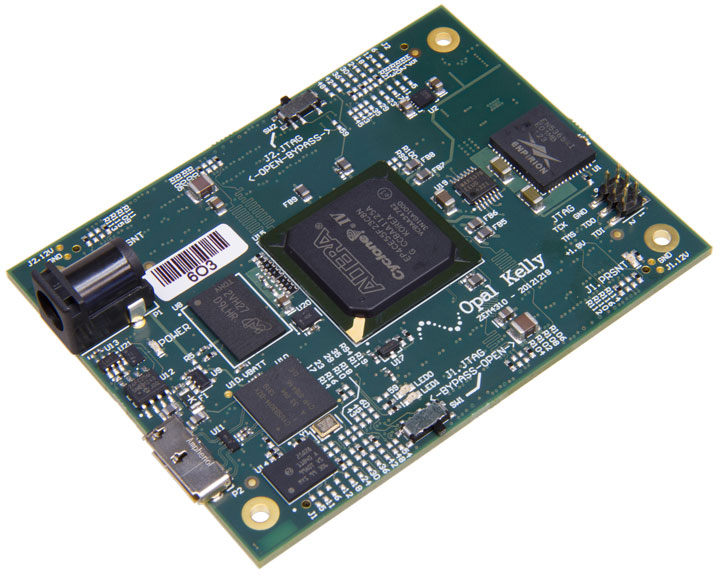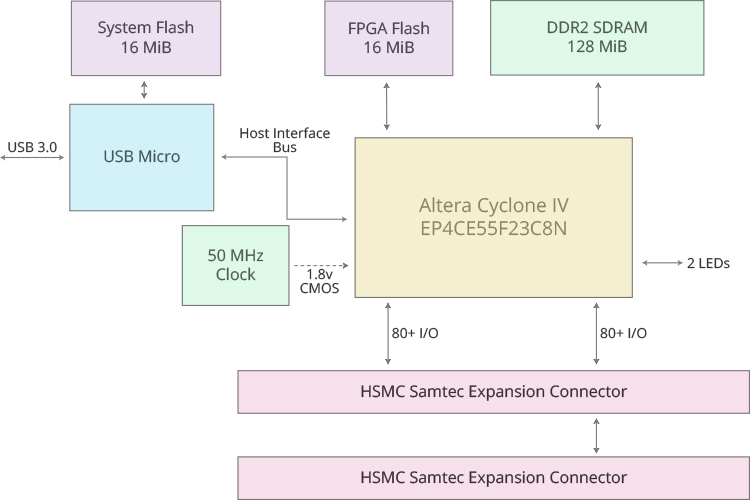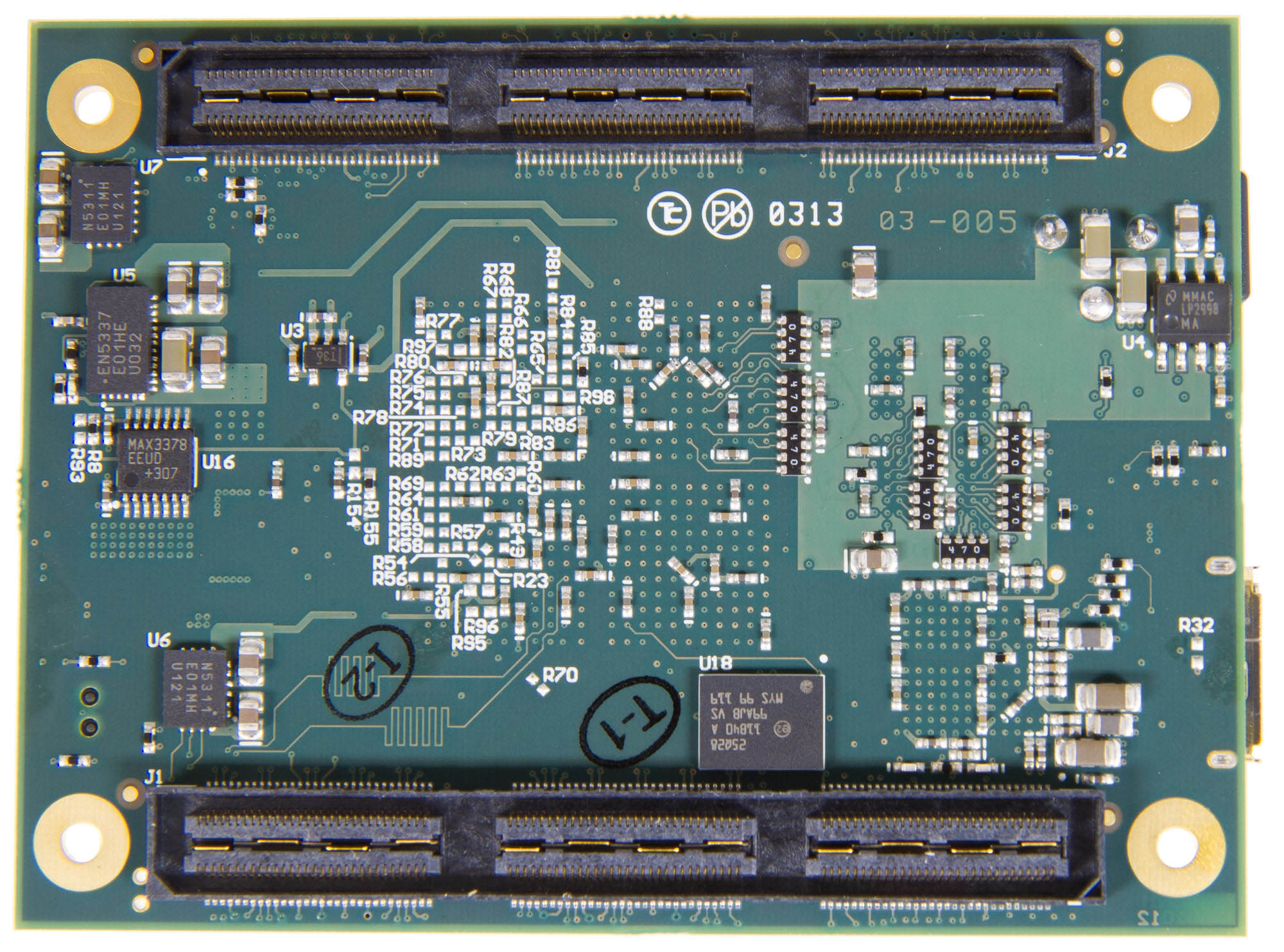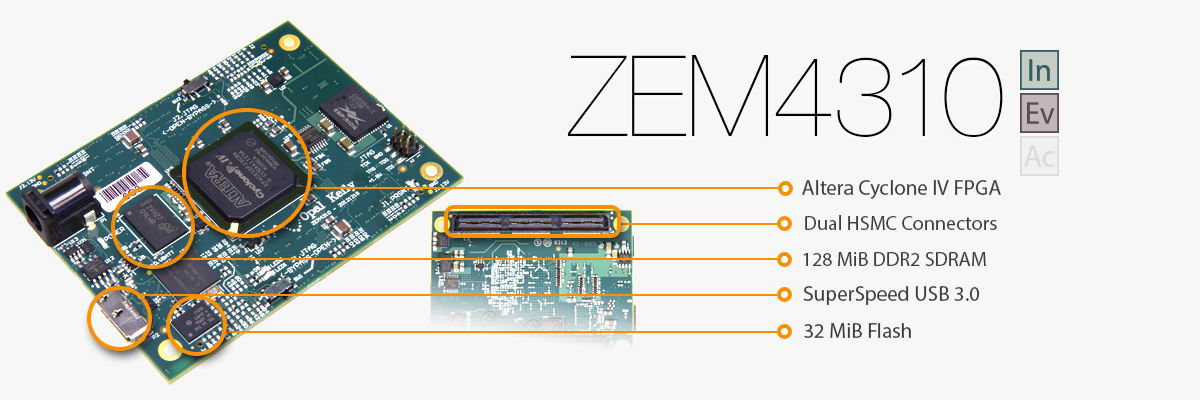
RedPitaya V1.1 Board
RedPitaya Board V1.1 Board
Red Pitaya is an open-source-software measurement and control tool that consists of easy-to-use visual programming software and free of charge, ready-to-use open-source, web-based test and measurement instruments.
With a single click, the board can transform into a web-based oscilloscope, spectrum analyzer, signal generator, LCR meter, Bode analyzer, or one of many other applications.
Red Pitaya can be controlled by using Matlab, LabView, Python & Scilab.
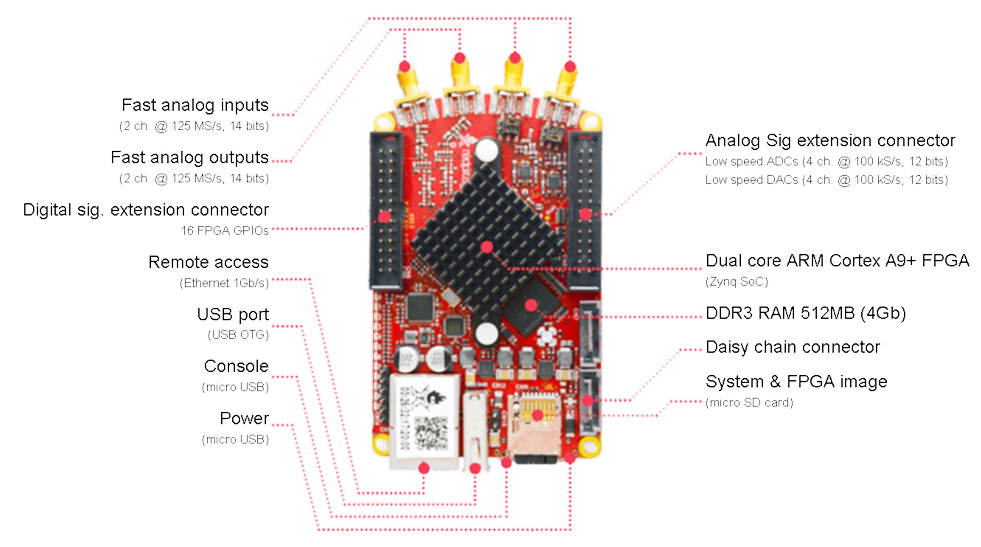
Main Features :
- Dimensions: 107 mm x 60 mm x 21 mm
- Ethernet 1Gbit/s (PHY Intel-Lantiq PEF7071V V1.5 10/100/1000Mbps)
- USB 2.0 (Microchip-SMSC USB3320C)
- OTG (On-The-Go, can work without host)
- WiFi USB dongles is possible : tested with Edimax EW7811Un
- 2x SMA RF inputs
- Bandwidth : 50 MHz (3 dB)
- Input impedance : 1 MΩ // 10 pF
- Sample rate : 125 Msps
- ADC resolution 14 bits
- Full scale voltage : +/-1V or +/-20V
- Absolute maximum input voltage rating : 30V (1500V ESD)
- 2x SMA RF outputs
- Bandwidth : 50 MHz (3 dB)
- Sample rate : 125 Msps
- DAC resolution : 14 bits
- Load impedance : 50 Ω
- Output slew rate limit : 200 V/us
- Serial connectivity (Daisy Chain)
- Connector type : 2x SATA type connector
- Two differential pairs per connector enabling up to 500 Mbps
- FPGA: Xilinx Zynq 7010 SoC
- 17,600 LUTs
- 28k Logic Cells
- 80 DSP slices
- Dual ARM® Cortex™A9
- Memory: 4 Gb DDR3 SDRAM (512 MB)
- SD card
- Card type: micro SD
- Supported standard: SD/SDIO 2.0/MMC3.31
- File System: FAT32
- Maximum card size: 32 GB
- 5V 2A micro USB Power supply
- 4x Auxiliary analog input channels
- Connector : dedicated pins on IDC connector E2 (pins 13,14,15,16)
- Nominal sampling rate : 100 ksps
- ADC resolution 12 bits
- Input voltage range : 0 to +3.5 V
- 4x Auxiliary analog output channels
- Output type : Low pass filtered PWM
- PWM time resolution : 4ns (1/250 MHz)
- Output voltage range : 0 to +1.8V
- 16x GPIO
- Voltage level : 3.3V
- Direction : configurable
- 16 single ended or 8 differential digital I/Os with 3,3V logic levels
- I²C, UART, SPI
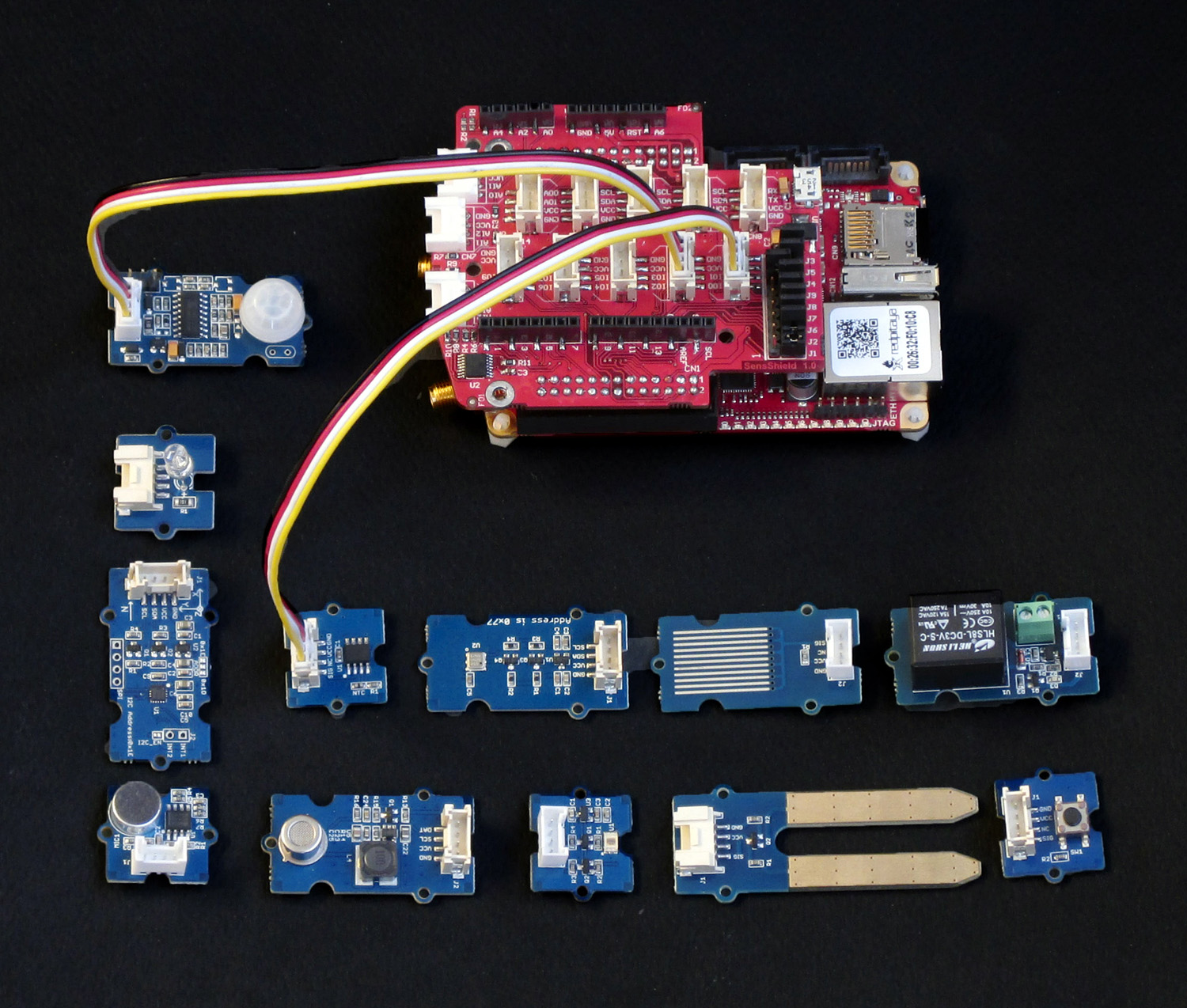
RedPitaya’s extension module board (~25 euros) is able to measure for example temperature, vibration or movement with special mini-modules connected on it. This mezzanine board facilitates the quick connection of different sensors and actuators to the Red Pitaya. All the “Grove modules” of “Seeed Studio” are available to connect it.
